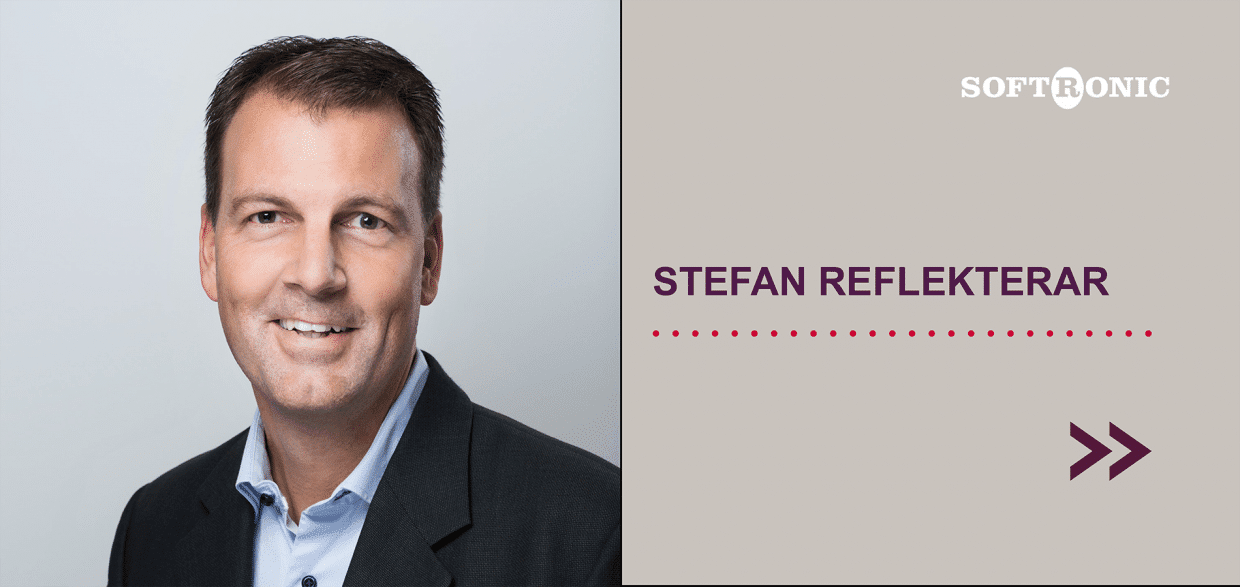I am sure this is something that you yourself, your own organisation or someone you know has experienced recently. Some people have spent years talking about Digital Transformation, or ‘Digitalisation’, but have not done anything about it. But suddenly something happened in the world around us that forced many of us to react.
In this blog post, Stefan Palm shares his thoughts on structured innovation and how important it is to keep on changing.
What is incredible about what has happened is the number of people who have realised the opportunities presented by new technology. Some operations managers who used to claim that the nature of their operations meant that people had to be physically in the office, realised that everything worked perfectly well when employees were somewhere else. Some IT managers who used to claim that their employees would never be able to handle new cloud-based services, saw entire organisations start using new services without anyone standing next to them telling them what to do. Change is possible, provided that everyone is (or is forced) to be involved.
However, being forced to react quickly often does not turn out as well as acting in a structured way. Of course, there are some organisations who will need to do some more work on making sure exactly who has access to which systems and may have to spend some time reading through the terms and conditions of the new services they have started to use. A stress test should be performed on any change that has been made recently to make sure it complies with most organisations’ GDPR processes. (I am guessing that some of you have not thought about GDPR for a few months?)
So I hope that many senior management teams have realised that change is possible and that their organisations are able to deal with change, which is something they had previously underestimated.
Take action to be in better control
It would be a good idea to go from ‘reacting’ to ‘acting’, as this will give you better control and governance. You will then have a greater chance of achieving positive results and reducing any negative consequences. This is controlled change, which is also called ‘innovation’. And change work is slightly easier to sell if you call it ‘innovation’.
But innovation can easily become like a ‘playhouse’; a way of spending money on items that individual people (normally) think is fun and interesting, but which are difficult to implement in the operations and generate any value. So you need to have some kind of structure to your innovation work, and there are many different kinds of processes on the market that suit different organisations to different extents. (This means that you do not have to invent your own process. Get help from someone who has already done the work and start with something that is already available.)
One challenge that I have noticed recently is the need to separate different issues from each other, while also clarifying dependencies. Let me give you an imaginary example to explain what I mean. (If this change had happened six months ago, the senior management of these operations could have claimed that they were implementing a change in line with their digital strategy, but it is now a reaction to a pandemic.)
Innovation happens when processes change
A company whose previous mission was to have physical premises and sell goods to customers now reacts by setting up online sales. To do this, they need new processes, a new way to manage deliveries (and returns), new systems support (online and integrations with freight forwarders?) and new infrastructure (including barcode scanners). When a company changes its strategy, it generates a number of other changes.
However, innovation can take place at different levels and it does not have to be such a major change as in the example above. Many operations have realised that infrastructure is not normally one of their core operations/competencies. It is common for IT (and, for example, the real estate industry) to buy this as a service from someone else. Innovation can then take place at a systems level. A new modern system can be more effective than the old (or non-existent) systems support. One common option is currently to change to a cloud-based system, which resolves some of the infrastructure into the bargain. However, real innovation happens when you change processes, i.e. the way you work; daring to consider solving a task in a new way, rather than being satisfied with the answer, “This is the way we have always done it”. This kind of innovation is normally made easier through a modern cloud-based system. At the moment, businesses normally achieve innovation in their business strategy through the ‘servicification’ of their offers. Business consultants like to throw around phrases, such as “doing the same as Uber, Spotify and Netflix”. As shown by my little example above, this kind of innovation often involves changes at all levels. This increases the risks involved in the change work and the need to clarify dependencies between levels.
Netflix is a personal favourite of mine as an example of change, but for some reason it is perhaps not talked about very much. They have actually kept a constant vision over a long period of time: to deliver a ‘cinema experience’ in your home. They started their business renting out VHS films and video players. When people started buying their own video players for their homes and did not want to go to the stores, Netflix posted the films to them (film clubs). And then when the infrastructure was in place, they started distributing films digitally over broadband, which is what people associate Netflix with today.
Netflix is still working to innovate at every level, and if you are interested in technology, I would recommend following their technology blog where they share a lot of their solutions as open source.
If you have been around for a while, there are no major surprises about what I have been writing about. Enterprise architects have long been working to understand what happens at the different levels of an organisation and their interdependencies, and have been proposing ways to innovate. But it seems that many companies have overlooked the need for an architect, or have considered it too much trouble when suppliers come and explain the opportunities of AI and IoT.
But I hope, and believe, that many people will realise that they need to be in control of how strategies/processes/capabilities/systems/infrastructures are interconnected, and how clear delimitations between layers can enable innovation in many different ways.
I think it is very rare for someone to come up with the perfect way of delivering the ultimate value for everyone, so we need to try new ways. So keep on changing, but do so using structured innovation.
Blog post written by Stefan Palm – copyright Softronic.



